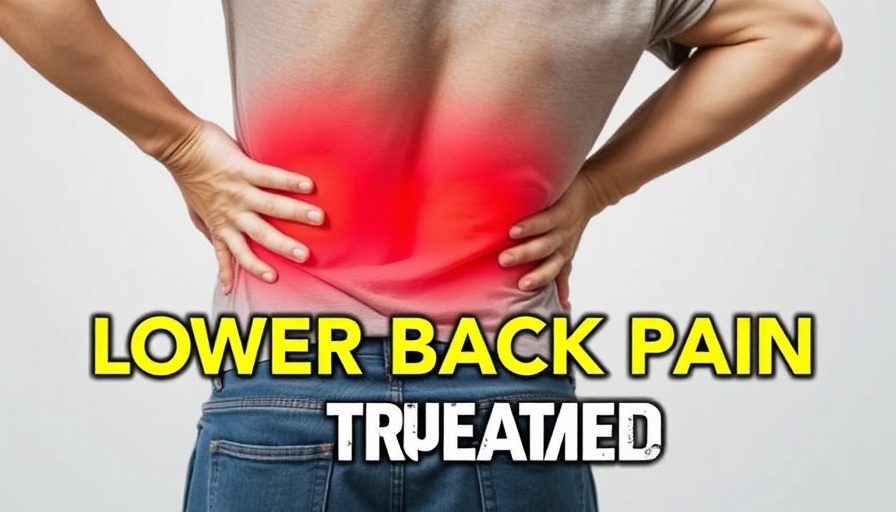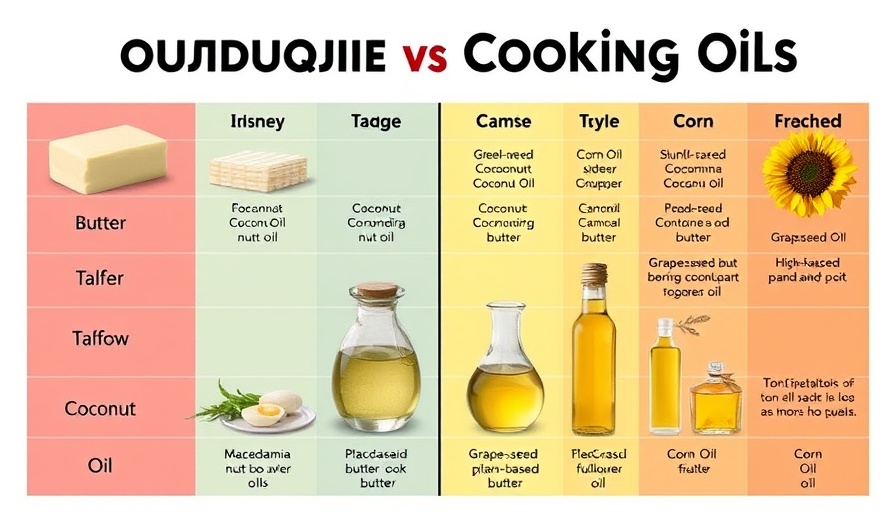
Understanding Lower Back Pain: A Common Concern
Lower back pain is more than just a minor nuisance; it affects millions, transforming ordinary tasks into painful ordeals. Women aged 50-70, in particular, may find this especially relatable as hormonal changes can play a significant role in the onset of pain. Whether your discomfort is acute or chronic, knowing the causes can empower you to seek the right solutions and reclaim your active lifestyle.
In 'Lower Back Pain Treatment - 12 Causes and Treatments,' the video delves into the complexities of lower back pain, offering insights that prompted a deeper exploration of effective strategies for managing this widespread issue.
12 Causes of Lower Back Pain and Their Treatments
Living with lower back pain can feel isolating, but understanding the root causes may help you find relief. Here are the twelve common causes along with effective treatments tailored for you:
1. Muscle Strain
Often a result of heavy lifting or even awkward movements, muscle strain leads to inflammation and pain in the lower back. For relief, rest for a day or two, apply ice initially, and switch to heat afterward. Over-the-counter medications such as ibuprofen can provide additional comfort. Gentle stretching can also aid recovery, making it an excellent first step toward healing.
2. Poor Posture
Sitting for extended periods in an awkward position can significantly contribute to back pain. To combat this, invest in an ergonomic chair and practice mindful sitting. Taking breaks every 30 minutes to stretch can make a noticeable difference. Engaging in yoga or Pilates can help correct imbalances and restore spinal health.
3. Herniated Disc
A herniated disc happens when the inner material of the disc protrudes, pressuring nearby nerves and causing pain. Treatment may involve physical therapy to realign the spine, pain relievers, or, in severe cases, surgery. It's essential to consult with a healthcare provider for an accurate diagnosis and tailored treatment plan.
4. Sciatica
This condition occurs when the sciatic nerve is compressed, leading to pain that radiates down the leg. Treatment options include stretching exercises, hot/cold therapy, and in some instances, nerve blocks to alleviate persistent pain.
5. Spinal Stenosis
Narrowing of the spinal canal can pressure nerves as we age. For relief, physical therapy can improve mobility while medications may reduce inflammation. If pain becomes unbearable, surgical options like a laminectomy can help.
6. Degenerative Disc Disease
This condition is a normal part of aging, where spinal discs wear down over time. Even so, engaging in low-impact exercise can help maintain mobility, while core-strengthening workouts support a healthy spine.
7. Arthritis
Osteoarthritis may affect the joints in the spine, leading to discomfort. Management includes anti-inflammatory medications and lifestyle modifications to alleviate pressure on the spine—weight management can be particularly beneficial.
8. Scoliosis
An abnormal curvature of the spine can lead to unequal pressure on the back which, in turn, causes pain. Treatment often includes bracing or physical therapy for younger patients, whereas severe cases might necessitate surgery.
9. Kidney Stones or Infections
Not all back pain is musculoskeletal; kidney issues can mimic lower back pain. Consult a doctor for tests if you suspect this, and stay hydrated to aid recovery.
10. Stress and Tension
Did you know that stress can manifest as physical pain? Incorporating relaxation techniques like meditation, massage therapy, or regular exercise into your routine can significantly alleviate tension-related back pain.
11. Obesity
Extra weight puts undue strain on the back. Developing a balanced diet and consistent exercise regimen can help shed excess weight, supporting overall spine health.
12. Sedentary Lifestyle
Inactivity weakens muscles, making back problems more likely. Aim for daily movement and strength training to reinforce the back and core, setting reminders to stand and move can also make this a habit.
Your Bonus Tip: Stretching for Relief
Embrace a daily stretching routine; investing just ten minutes can lead to significant decreases in pain and increases in flexibility. The cat-cow pose or child's pose are excellent options to start with. For those who want additional resources, simply drop ‘STRETCH’ in the comments for a free guide!
Summing Up Lower Back Pain Management
Whether you're grappling with mild discomfort or severe pain, understanding these twelve causes and implementing the suggested treatments can lead to substantial relief. Don’t let pain dictate your life—if symptoms persist, seeking assistance from a healthcare professional can pave the way for a healthier, pain-free future. Stay proactive in your health journey by sharing this article with others who might benefit from these insights!
 Add Row
Add Row  Add
Add 




Write A Comment